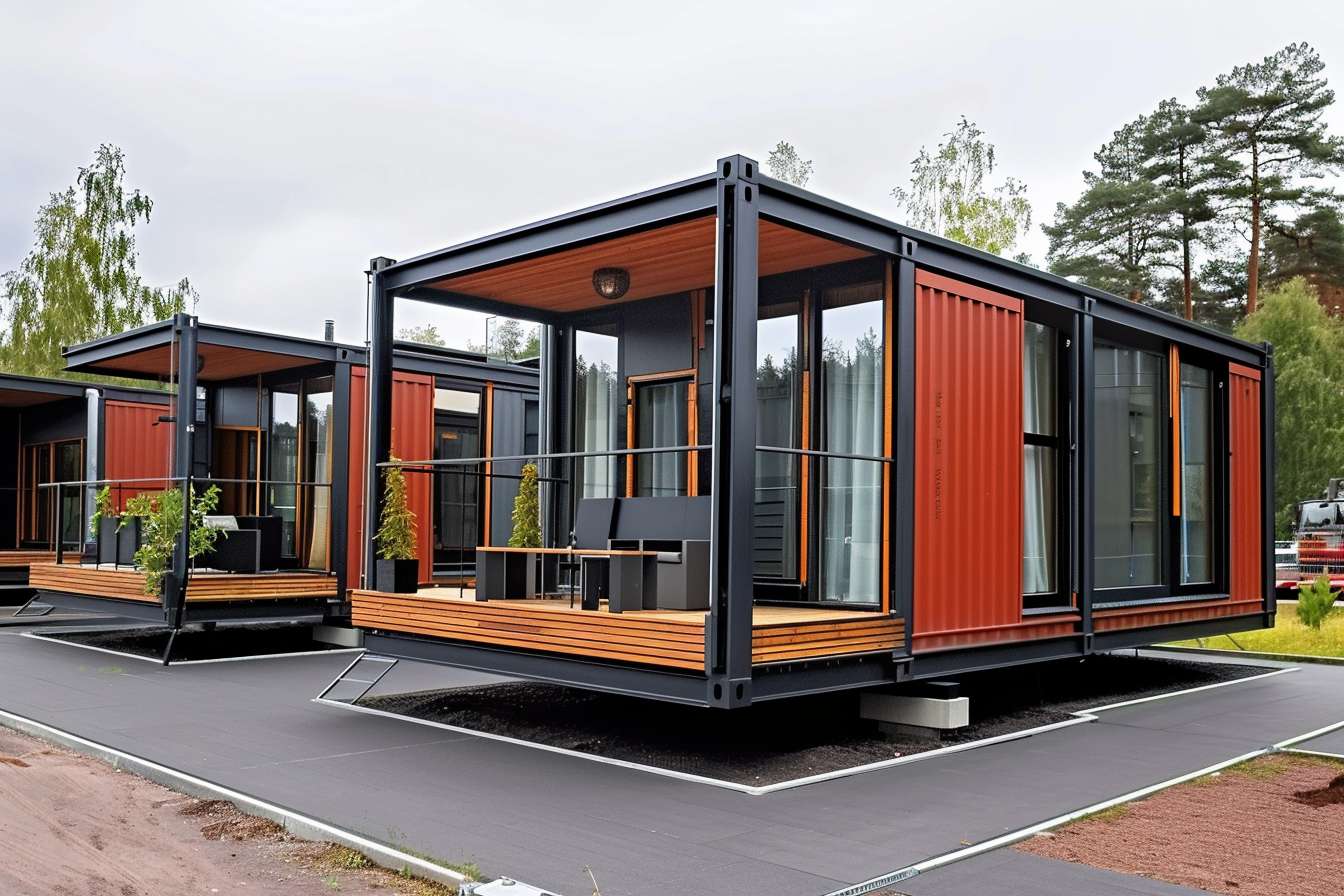Container Homes: Style, Efficiency, and Affordability Combined
Shipping container homes have emerged as an innovative housing solution that transforms industrial cargo containers into comfortable, stylish living spaces. These unique dwellings offer an alternative approach to traditional construction, appealing to environmentally conscious individuals, minimalist enthusiasts, and those seeking affordable housing options. As housing costs continue to rise across Belgium and Europe, container homes present an intriguing possibility for modern living that combines sustainability with contemporary design principles.

How Container Homes Combine Style, Efficiency, and Affordability
Container homes excel in merging aesthetic appeal with practical functionality. The industrial origins of shipping containers provide a distinctive architectural foundation that architects and designers have transformed into sleek, modern residences. Steel construction offers clean lines and geometric shapes that align perfectly with contemporary minimalist design trends. The modular nature of containers allows for creative configurations, enabling homeowners to stack, arrange, and combine units to create unique layouts tailored to their specific needs.
Efficiency manifests in multiple aspects of container home living. The compact dimensions encourage thoughtful space utilization, promoting organized living without unnecessary excess. Standard shipping containers measure 20 or 40 feet in length, providing defined parameters that challenge designers to maximize every square meter. This constraint often results in innovative storage solutions, multi-functional furniture, and intelligent room layouts that would benefit any living space.
Affordability stems from the repurposing of existing materials and streamlined construction processes. Rather than constructing from foundation to roof, container homes begin with a pre-existing steel structure that significantly reduces material costs and construction time.
What Are the Benefits of Shipping Container Homes
Environmental sustainability represents one of the most compelling advantages of container homes. Each repurposed shipping container prevents approximately 3,500 kilograms of steel from entering landfills while reducing the demand for new construction materials. This recycling approach significantly decreases the environmental footprint compared to traditional building methods.
Durability stands as another key benefit. Shipping containers are engineered to withstand harsh oceanic conditions, heavy loads, and extreme weather during international transport. This robust construction translates to homes that can endure severe weather conditions, providing long-term structural integrity with minimal maintenance requirements.
Construction speed offers practical advantages for homeowners eager to occupy their new residences. Container home projects typically require 2-4 months for completion, compared to 6-12 months for conventional construction. This efficiency reduces labor costs and allows families to move into their homes sooner.
Flexibility and expandability provide long-term value. Container homes can be easily modified, expanded, or relocated if circumstances change. Additional containers can be incorporated to accommodate growing families or changing lifestyle needs without extensive renovation projects.
Discover Container Homes: Affordable, Modern, and Functional Solutions
The affordability of container homes makes homeownership accessible to individuals who might otherwise struggle with traditional real estate markets. Basic container conversions can cost significantly less than conventional homes while providing all essential amenities for comfortable living.
Modern container homes incorporate contemporary technologies and design elements that rival traditional construction. High-quality insulation, energy-efficient windows, solar panel systems, and smart home technologies can be seamlessly integrated into container structures. Many container homes feature open-plan living areas, large windows, and outdoor spaces that create bright, welcoming environments.
Functionality drives every aspect of container home design. Built-in storage systems, fold-away furniture, and multi-purpose rooms maximize the utility of limited space. Kitchen islands that double as dining tables, murphy beds, and convertible workspaces demonstrate how container homes can accommodate diverse lifestyle requirements within compact footprints.
| Container Home Type | Provider/Builder | Cost Estimation (EUR) |
|---|---|---|
| Basic Single Container | Local Contractors | €25,000 - €45,000 |
| Modified Two-Container | Specialized Builders | €60,000 - €90,000 |
| Luxury Multi-Container | Premium Designers | €100,000 - €200,000 |
Prices, rates, or cost estimates mentioned in this article are based on the latest available information but may change over time. Independent research is advised before making financial decisions.
Container homes require careful planning regarding building permits and local regulations. Belgian municipalities have varying requirements for alternative housing structures, making it essential to consult local authorities before beginning any container home project. Professional architectural services can ensure compliance with building codes while optimizing design possibilities.
Insulation and weatherproofing represent critical considerations for container homes in Belgium’s temperate climate. Proper insulation prevents condensation issues while maintaining comfortable interior temperatures throughout seasonal changes. Professional installation of heating, ventilation, and air conditioning systems ensures year-round comfort.
Container homes represent a fascinating intersection of sustainability, affordability, and modern design. While not suitable for every situation or preference, they offer viable alternatives for individuals seeking unique housing solutions. The combination of environmental benefits, cost savings, and design flexibility continues to attract interest from diverse demographics. As building techniques improve and regulations adapt to accommodate alternative construction methods, container homes may play an increasingly important role in addressing housing challenges while promoting sustainable living practices.



